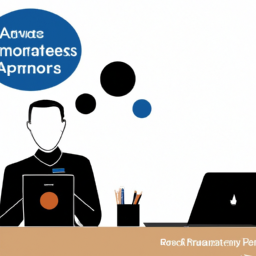
Have you ever wondered why some reviews in Amazon’s tech products section seem a bit off? It’s crucial to recognize the biases that can influence these online reviews. Some people are more likely to leave a review after a negative experience than a positive one, whereas others might provide glowing testimonies for incentives. Understanding these biases can help you make more informed decisions when shopping online.
Reading through Amazon reviews can sometimes feel like navigating a minefield, right? The first thing you should be aware of is confirmation bias. That’s when reviewers rate a product highly because they believe a known brand can do no wrong, or the flipside of that coin, they think no good can come from an unfamiliar brand. With this in mind, it’s best to read a variety of reviews to gain a balanced understanding of the product in question.
You’ve also got to consider the halo effect. This is when a reviewer allows their impression of one positive element of a product to positively influence their overall assessment. For instance, they might adore the stylish design so much that they overlook some functional glitches. And of course, don’t forget about the impact of reviewer bias. Some individuals might have personal motivations to either trash or praise a product, which can drastically skew the ratings.
That’s quite a bit to digest, isn’t it? We didn’t even cover one of the more prominent biases – the influence of extreme reviews. Some people tend to focus more on 1-star and 5-star reviews, which can create distorted perceptions. So, keep an eye out for those various biases when scanning through Amazon tech reviews. They could make all the difference in ensuring you get your money’s worth.
Identifying Reliable Amazon Reviews for Tech Products
Navigating through Amazon reviews can sometimes feel like decoding an encrypted message. For tech products specifically, the task becomes more challenging due to the complexity of products. However, there are keys to unlocking the truth behind the words.
Assessing the Truthfulness of Positive Reviews
Positive reviews are certainly assuring, but the authenticity should always be considered. Genuine positive reviews often include specific details about the product’s features and the reviewer’s experience. They offer balanced observations while acknowledging that no product is flawless.
Detecting False Negative Reviews
Negative reviews can be influential, but they’re not always accurate. Some might be inflated complaints by customers who had unrealistic expectations or didn’t read instructions properly. Reading them with skepticism can help you separate genuine negative reviews from irrelevant ones.
Understanding the Significance of Star Ratings
A product with a five-star rating seems like an excellent choice, right? Not necessarily. The star ratings demand a bit more analysis.
Misinterpretation of Star Ratings
An overall high rating doesn’t guarantee satisfaction. Multiple five-star reviews for a product could mean it’s truly worth it, or it might mean that the reviewers are not as discerning.
Consideration of Reviews with Middle-tier Star Ratings
Interestingly, those star ratings in the middle often provide a more balanced perspective. These reviews tend to provide a more well-rounded view of the product, outlining both the good and the bad.
Finding Best Tech Products on Amazon Through Reviews
Amazon reviews can play a pivotal role in helping you find the best tech products.
Using Reviews to Compare Similar Tech Products
Reviews provide a gold mine of information for comparing similar products. Look for consistencies between reviews for similar products. Are people continually praising or criticizing the same features?
Guided Shopping with Verified Purchase Reviews
Reviews marked as “Amazon Verified Purchase” indicate the reviewer actually purchased the product, making their feedback more reliable.
Navigating Through Conflicting Amazon Reviews
Encountering contradicting reviews for the same product is common. How you approach these conflicts can affect your purchasing decision.
Approaches to Resolve Contrasting Reviews
When faced with contrasting reviews, putting the feedback in context is essential. Personal preferences play a large part in reviews.
Analyzing the Context of Contradictory Reviews
Identifying the perspective of the reviewer can be enlightening. What is their level of expertise with technology? Are their expectations in line with what the product is offering?
Evaluating the Credibility of Amazon Reviewers
The credibility of reviewers plays an important role in the veracity of reviews.
Verification of Reviewer’s Profile and History
The more reviews someone has written, the more likely their feedback is to be credible. Reviewers with a history of balanced, thoughtful reviews can often be trusted.
Recognizing Reviewer’s Expertise
Those who demonstrate technical knowledge in their reviews might provide insights that others miss.
Impact of Negative Reviews on Product Reputation
Negative reviews can damage a product’s reputation but also offer room for improvement.
Balancing Negative Reviews with Positive Testimonials
In the face of negative reviews, consider the positive ones as well. Are the positives consistently outweighing the negatives?
Analyzing Constructive Criticism in Negative Reviews
These criticisms can serve as a sign of possible improvements for the product by the manufacturer.
Reporting Suspicious Activities in Amazon Reviews
It’s crucial to be aware of suspicious activities in Amazon reviews and report them.
Tracking and Reporting Falsified Positive Reviews
Fake positive reviews are designed to artificially inflate a product’s rating. Look for overly generic praise, or multiple reviews with the same wording.
Reporting Inauthentic Negative Reviews
False negative reviews can damage the reputation of good products unduly. Report them to maintain the integrity of the review platform.
Participating Responsibly in the Amazon Review Community
Responsibility is essential in shaping a reliable Amazon review community.
Leaving a Responsible Review for Tech Products
Your voice can help others. Ensure to provide honest, balanced, and detailed reviews.
Positively Engaging with Other Reviews
Engage with other reviewers in a constructive manner. Be respectful and tolerant to contrasting views.
Common Biases When Reading Amazon Reviews
Individual biases can cloud judgment while reading reviews.
Confirmation Bias in Favor of Positive Reviews
People tend to favor information that affirm their existing beliefs. If you expect a product to be good based on its brand or advertising, you might lean towards positive reviews about it.
Negativity Bias Against Lowly Rated Tech Products
There’s a tendency to give more weightage to negative information than positive. So, a handful of negative reviews can overshadow numerous positive ones.
Conclusion: Reading Amazon Reviews Effectively
Understanding biases, determining reliability of reviews, assessing ratings, and responsibly participating in the community can make you a more informed Amazon customer.
Strategies to Avoid Biases in Reading Amazon Reviews
Broaden your perspective and approach each review objectively rather than using them to confirm what you already believe.
Importance of Skepticism When Reading Reviews
Stay open-minded and practice a healthy degree of skepticism. Consider multiple opinions, not just the ones that comply with your existing viewpoint.
Remember, Amazon reviews are a helpful guidance tool for purchasing tech products, but they’re not foolproof. Always take them as part of a wider selection process and consider other factors before making your final decision.




















